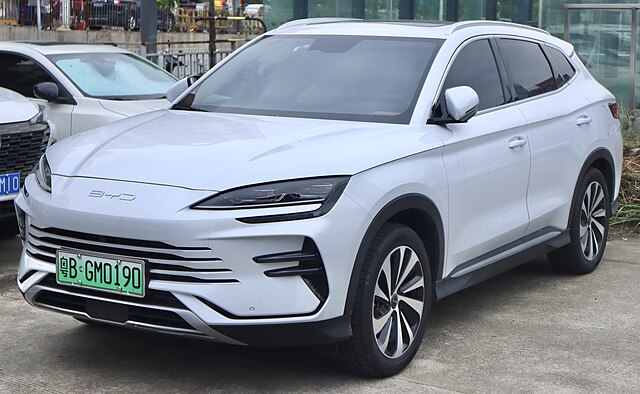A plug-in hybrid electric vehicle (PHEV) is a type of hybrid electric vehicle equipped with a rechargeable battery pack that can be replenished by connecting a charging cable into an external electric power source, in addition to internally by its on-board internal combustion engine-powered generator. While PHEVs are predominantly passenger cars, there are also plug-in hybrid variants of sports cars, commercial vehicles, vans, utility trucks, buses, trains, motorcycles, mopeds, military vehicles and boats.
The BYD Song plug-in hybrid SUV series is the world's all-time best-selling plug-in hybrid with over 1,050,000 cumulative sales in December 2023.
The Mitsubishi Outlander PHEV was once world's all-time best-selling plug-in hybrid until 2022. Cumulative global sales reached 290,000 units in September 2021.
The Lohner–Porsche Mixte Hybrid was the first gasoline-electric plug-in hybrid automobile.
Lithium-ion battery pack, with cover removed, in a CalCars "PRIUS+" plug-in hybrid converted Toyota Prius converted by EnergyCS
A hybrid electric vehicle (HEV) is a type of hybrid vehicle that combines a conventional internal combustion engine (ICE) system with an electric propulsion system. The presence of the electric powertrain is intended to achieve either better fuel economy than a conventional vehicle or better performance. There is a variety of HEV types and the degree to which each functions as an electric vehicle (EV) also varies. The most common form of HEV is the hybrid electric car, although hybrid electric trucks, buses, boats, and aircraft also exist.
The Toyota Prius is the world's best-selling hybrid car, with cumulative global sales of 5 million units up until September 2022
A New Flyer XDE60 Xcelsior articulated hybrid-electric bus operated by MBTA
The Toyota Highlander Hybrid has a series-parallel drivetrain.
The Saturn Vue Green Line is a mild hybrid.








